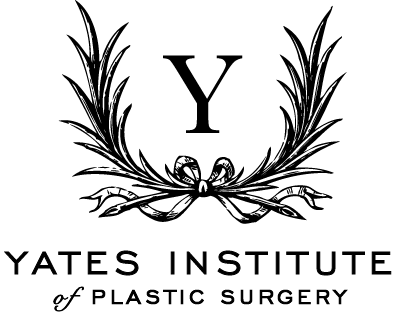How to Avoid Fake Injectables
The Risks of Bargain Botox
Botox and dermal fillers have become the go-to treatments to smooth wrinkles and restore facial volume. But the rising demand has led to a surge in fake products. This issue is far from superficial; fake products can lead to severe health complications and disheartening cosmetic results. The old adage "you get what you pay for" rings especially true in the world of cosmetic plastic surgery. Here's what you need to know to protect yourself:
Botox and Dysport
Botox and Dysport are brand names for botulinum toxin, a neurotoxic protein that, when used correctly, has both cosmetic and medical applications. These products work by temporarily paralyzing muscles, which can reduce the appearance of wrinkles and fine lines. Medically, they are used to treat conditions such as chronic migraines, excessive sweating, and muscle spasms.
In the cosmetic industry, Botox and Dysport are primarily used to smooth wrinkles on the forehead, around the eyes (crow's feet), and between the eyebrows. They can effectively create a more relaxed and youthful appearance when administered by a skilled professional.
The Appeal of Cheap Injectables
The high price of real Botox and Dysport treatments drives some people to look for cheaper options. These options often show up as low-cost treatments from less skilled providers or those working outside normal medical places. The price gap can be significant, making these offers appealing to those unaware of the associated risks.
However, it’s important to know that the price of real Botox and Dysport treatments depends on the product cost and the injector's skill. Licensed practitioners typically charge more, reflecting their training and the assurance of receiving an FDA-approved product.
Lower Prices Can Be Risky
Clinics and spas offering significantly lower prices may do so by cutting corners. This can include purchasing cheaper, unregulated products that may not meet the safety and efficacy standards set by health authorities like the FDA.
The Risks of Counterfeit Injectables
Counterfeit injectables pose substantial risks. These products may contain incorrect dosages, dangerous impurities, or none of the advertised active ingredients at all. In other words, you might not be getting Botox at all. The results can be not only ineffective but also harmful.
How to Identify Fake Products
Genuine Botox and Dysport come in well-marked vials with specific lot numbers and expiration dates that can be verified. Counterfeit products often lack these details or display them inconsistently. Packaging and labeling quality can also be a telltale sign; authentic manufacturers provide clear, professional packaging.
The consequences of injecting a counterfeit product can range from mild—such as temporary skin irritation—to severe, including long-term muscle paralysis, infection, or allergic reactions. In the worst cases, these reactions can be life-threatening.
Even if the health risks are avoided, the aesthetic outcomes of using fake products can be disappointing or disfiguring. Issues such as uneven muscle paralysis, drooping features, or unresponsive treatment areas often occur, leaving individuals worse off than before the treatment.
The Market for Fake Botox
The growing demand for cosmetic treatments like Botox and Dysport has inadvertently fueled a parallel market for counterfeit injectables. This illicit market thrives on the promise of reduced costs but brings with it significant risks.
Counterfeiters exploit various weaknesses in the supply chain to distribute fake products. These can include importing bulk quantities of counterfeit products from countries with lax regulations or repackaging substandard products to mimic reputable brands. Often, these products find their way into the hands of unlicensed practitioners or those willing to compromise on quality for cost.
The United States has seen a surge in the availability of counterfeit cosmetic products. According to data from law enforcement and health agencies, seizures of counterfeit beauty products have increased, indicating a growing problem. These fake products often contain harmful ingredients like silicone, baby oil, and even super glue, which are not approved for medical use and can cause serious health issues.
The Food and Drug Administration (FDA) regulates genuine Botox and Dysport as prescription drugs, which means they must meet strict safety and efficacy standards. The FDA also conducts inspections and oversees the distribution chain to prevent counterfeits from reaching the market. However, enforcement challenges persist, especially with the rise of online sales and international shipping that obscure product origins.
Choosing the Right Injector
The choice of who administers your Botox or Dysport injections is as important as the product itself. A qualified and experienced injector not only ensures the use of genuine products but also understands the complexities of facial anatomy, essential for achieving the best results and minimizing risks.
Always choose a licensed medical professional such as a plastic surgeon, or a nurse practitioner who specializes in dermatological and cosmetic procedures. These professionals have the necessary training to assess the suitability of Botox and Dysport treatments for each individual case.
Questions to ask your injector:
What are your qualifications and how long have you been performing injections?
Can you provide before and after photos of your previous work?
What brands of products do you use, and are they FDA-approved?
What should I expect during the recovery period?
How do you handle complications or unsatisfactory results?
Red Flags
Be wary of red flags such as considerably lower prices than standard, lack of information or transparency about the product source, and providers who are hesitant to discuss their credentials or product details.
Safe Practices for Cosmetic Treatments
To make sure you have a safe and effective cosmetic treatment experience, it’s important to follow certain guidelines and be informed about the procedures.
You should ask to see the vial being used for your treatment to verify that it is indeed an FDA-approved product. The vial should have clear labeling, including a lot number and expiration date, which can be checked against the manufacturer’s records.
Recommendations for safe injection practices:
Consultation: Always have a detailed consultation with the injector to discuss your medical history, expectations, and potential risks.
Clinic Standards: Choose a clinic that maintains high standards of hygiene and follows all recommended safety protocols.
Follow-Up Care: Ensure that the clinic offers follow-up care to monitor the results and manage any adverse reactions post-treatment.
FAQs about How to Avoid Fake Injectables
How can I verify the credentials of a cosmetic injector?
· To verify the credentials of a cosmetic injector, you can check if they are licensed in your state by visiting your state’s medical board or professional licensing website. Many boards offer an online search tool where you can input the practitioner's name to access their licensing status, qualifications, and any disciplinary actions.
Are there specific brands of Botox and Dysport that are safer than others?
· The brands Botox (by Allergan) and Dysport (by Galderma) are both FDA-approved and considered safe when administered by a qualified professional. There are no "safer" brands per se; the key to safety lies in ensuring that the products are genuine and administered by a licensed practitioner.
What should I do if I suspect I've received a counterfeit injectable?
· If you suspect that you have received a counterfeit injectable, it is important to seek medical attention immediately, even if you are not currently experiencing any adverse effects. Additionally, report the incident to your local health authorities and the FDA to help prevent further distribution of counterfeit products.
Can I bring my own Botox or Dysport to a clinic for injection?
· Bringing your own Botox or Dysport to a clinic is generally not recommended. Reputable clinics will source their products directly from authorized distributors to ensure authenticity and will handle all aspects of storage and administration to maintain product integrity.
How often do counterfeit injectable incidents occur, and what is being done to reduce them?
· The frequency of counterfeit injectable incidents is difficult to quantify accurately due to underreporting. However, the FDA and other regulatory bodies are actively working to reduce these incidents through stricter regulations, increased inspections, and public education efforts to raise awareness about the risks of counterfeit injectables and the importance of seeking treatment from reputable providers.
Final Words
While the allure of cheaper Botox and Dysport treatments can be tempting, the risks associated with fake products make it imperative to prioritize safety over cost. By understanding the market dynamics, choosing the right professional, and adhering to safe practices, you can enjoy the aesthetic benefits of these treatments without compromising your health or well-being. Remember, when it comes to cosmetic procedures, the best results are achieved not just by treating the symptoms but by ensuring the overall safety and health of the patient.
Further Reading about Injectables at Yates Institute of Plastic Surgery
Read more about Botox and Fillers
Read more about 5 Things You Need To Know Before Getting Lip Fillers
Read more about How do you know if Botox is right for you? 8 Burning Questions Answered
Read more about What to do after Botox injections
Read more about Everything You Wanted to Know about Injectables

